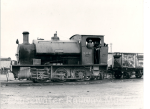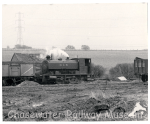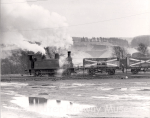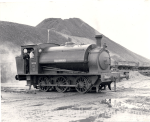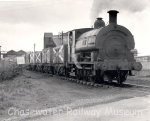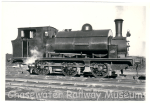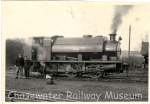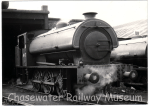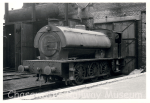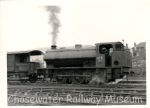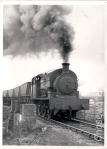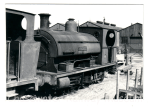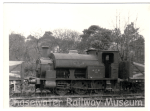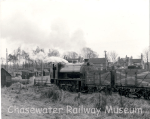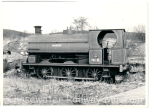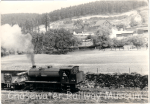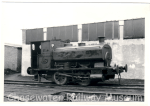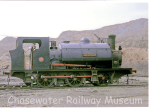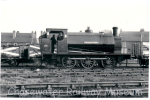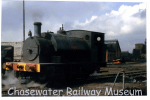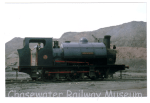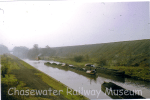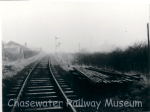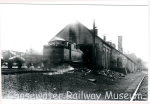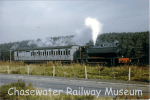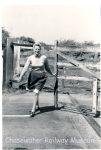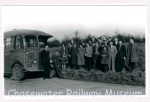Pages
-
Recent Posts
Categories
- 2-Chain Maps and Bridge Maps
- Album 1 Local Colliery Locos
- Album 2- Local Colliery Locos
- Album 3 Local Pit Locos
- Album 8 DB Dave Borthwick Station pics
- Album 9 DB Dave Borthwick's Pics of New Station Yard, Line & Station Sites
- Arthur Deakin's Photo Collection
- Badges
- BCN Birmingham Canal Navigations
- Bits and Pieces
- BR British Railways Items
- Brick Collection
- Bridge Plates
- Built Works and Components
- Cambrian Railway
- Cannock & Rugeley Collieries Objects
- Cannock Chase Colliery Co.
- Carriage Equipment
- Chasewater Light Railway Archives
- Chasewater Railway
- Chasewater Railway Museum
- Chasewater Railway Museum Bits and Pieces
- Chasewater Railway Pics – Not in collection
- Chasewater Railway Publications
- Commercial Records & Equipment
- Control & Communications
- Crockery
- Cutlery
- Destination Indicators
- Drawings
- Early posts
- Events
- Flat Paper Items – Chasewater Railway
- Flat Paper Items – Non CLR
- Framed Handbills
- Framed Pictures
- Framed Posters
- From the Archive
- Glassware
- Great Central Railway Archives
- Great Central Railway Objects
- Great Northern Railway Archives
- Great Northern Railway Objects
- Great Western Railway Archives
- Great Western Railway Objects
- Hunslet
- Ian Allan
- Isle of Man
- Lamps
- Lancashire & Yorkshire Railway
- Littleton Colliery
- Locomotives
- London & North Eastern Railway Archives
- London & North Eastern Railway Objects
- London & North Western Railway Archives
- London & North Western Railway Objects
- London and North Eastern Railway Archives
- London Midland & Scottish Railway Archives
- London Midland & Scottish Railway Objects Objects
- Maps
- Midland Railway Archives
- Midland Railway Objects
- Miscellaneous
- Models
- Museum & Artefacts
- Museum Exhibits
- National Coal Board (NCB)
- New Post
- News
- News 2
- Newsletters
- North Eastern Railway Archives
- North Staffs Railway Archives
- Old Chasewater Railway Photographs
- Photograph Collection
- Publications
- Railway Clearing House Archives
- Railway Heraldry
- Reference Library
- Rolls Of Honour
- Shropshire & Montgomeryshire Railway Archives
- Signage
- Southern Railway
- Station Furniture
- Tools & Equipment
- Toys & Games
- Track & Track Components
- Uncategorized
- Uniform
- Vehicle Components
- Videos
- Volunteers
Meta
- Follow Chasewater Railway Museum on WordPress.com
Blogroll
- Amerton Railway
- Aston Manor Road Transport Museum
- Brownhills Bob
- Canal & River Trust
- Cannock Chase Mining Historical Society
- Chasewater Railway
- Churnet Valley Railway
- Flickr
- Friends of Hednesford Park
- Get Support
- Learn WordPress.com
- Lichfield & Hatherton Canals Restoration Trust
- Museum of Cannock Chase
- Oak Park Runner
- Severn Valley Railway
- South Staffs railway
- Staffordshire Past Track – Local History on line
- Telford Steam Railway
- Theme Showcase
- WordPress.com News
- Youtube – chasewaterstuff's videos
Pages
Tag Archives: Industrial Locomotives
Chasewater Railway Museum – More about the Neilson Loco – 1968
More about the Neilson Loco
A Trip to Gartsherrie
From 1968 Mercian Vol.1 No.3
By Trevor Cousens
On Friday, 16th February at 6.00pm a small party consisting of Lawrence Hodgkinson, Mike Lewis and myself, departed from Chasewater in Mike’s 30 cwt. Van en route for Gartsherrie, near Glasgow. The purpose of this trip was to purchase spare parts from the three Neilson locomotives remaining at Bairds and Scottish Steel Ltd.
A stop was made in Derby to pick up Steve Allsop, then we cut across to the M6 motorway. The speed of Mike’s van was limited by a governor to 45 mph so the going was slow.
It was quite a relief when a stop was made at a service area for refreshment. We made full use of the transport drivers eating facilities – in our overalls we did not really have much choice. Back on the motorway we continued our journey northward. I retired to the back of the van to try to sleep. After rolling my sleeping bag out amongst several hundredweights of tools, bars, rucksacks and other bric-a-brac I tried persistently to sleep. The noise of the engine and the tyres on the road, coupled with a sharp drop in the temperature precluded this. I heard someone groan ‘snow’ from up front. This is what we had dreaded. A climb up Shap with eight inches of snow on the ground!! After this, sleep was impossible. I lay on my back and watched icicles form on the van roof. About 3.30am on the Saturday morning the van halted. After many gear changes, reverses and sliding of doors up front there was silence for a moment. When I looked out we were parked on a small snow-covered country lane; fir trees on one side, a railway above us and the moon shining across snow-covered fields. They had had enough for the evening, and Steve, Lawrence and Mike came aft for sleeping bags, blankets, camp beds and other items necessary for comfort!! While the three sorted themselves out I got out with a camera and had a prowl around. I found that we had parked practically under the West Coast main line at Beattock.
In front of us Brush type 4s pounded up to Beattock Summit, assisted by English Electric type 4s, 2s, and 1s on the night mail trains and sleepers. One could not help thinking that there was something missing not seeing the flicker from the firebox silhouetting the fireman as he shovelled rapidly on a ‘Duchess’ at full pelt up the bank.
The others had comfortably settled down by now in the back of the van. I chose the driver’s seat as I was sure that it could be no more uncomfortable than trying to lie down again. With last reminders to wake up at 6.45 am to be in Glasgow for 8.30 am, we dozed off to sleep, a sleep punctuated by the clatter of trains over the bridge above and the wail of diesel horns as bankers attached and detached from the trains – we couldn’t have picked a quieter spot!!
At 7.00 am Lawrence and Steve spent 20 minutes trying to wake Mike, who seemed to be the only one who had really slept, despite the noise (still, he is a railwayman). We slowly began to thaw out when we were back on the main road to Glasgow, and the sun came out, picking out the snow-covered hills in a fiery pink light,
Arriving in Glasgow at 9.30 am we met the fifth member of our party – Gerald Wildish – who had travelled up on the overnight train from Darlington to Glasgow without any heating.
Neilson at Gartsherrie
After a meal we arrived at Bairds and Scottish Steel’s works about 11.00 am, where we weighed in and were directed to the loco shed. We mat a Scottish RPS representative who was also buying spares for their Neilson. After having a look at our Neilson tucked away in the workshops inside this gigantic, desolate steelworks, we proceeded to the engine sheds where we worked in pitch darkness with the odd brilliant ray of sunshine punching a dazzling beam across the shed, and with snow dripping from the smoke vents onto our heads. We dismantled the spares from the three scrap Neilsons and filled Mike’s van with spare parts. An amusing interlude was enacted when Gerald held tea-cups under the water crane to be washed out while I pulled the cord, drowning both the cups and Gerald in several hundred gallons of water.
The load was examined by Bairds and we were weighed out – 10 cwt. Of spares aboard. We then proceeded to the coal mines at Gartshore where we saw the Scottish RPS Neilson and an Andrew Barclay still simmering next to a red hot brazier which we stood around for 15 minutes to warm ourselves before returning to Glasgow, to a hotel and a well-earned drink. The hotel we had chosen to stay at was unfortunately a rather expensive one. I think they were rather shocked to see four really scruffy individuals – black all over with soot and dirt and in need of shaves. We were ushered up the back lift to two attic type rooms – but they had hot water and beds!!
The Saturday evening was spent feeding and drinking and we bade farewell to Gerald who was lodging in another part of Glasgow, prior to his departure back to Darlington. We all turned in, forgetting to put forward the alarm clocks and so missing breakfast by one hour!! Room service rang us at 10.00 am Sunday, and we cajoled the waitress to find us four late breakfasts. At 11.00am we made a start back towards Chasewater, after buying all the Sunday newspapers. We stopped for diesel at Lockerbie and continued south, the sun was beginning to thaw the snow and a thick mist was rising. Suddenly out of the mist our way was blocked by two policemen!! They directed us to the side, and asked why we carried no ‘C’ licence. They asked to see the load. When we opened the door what a sight must have met their eyes, with piping strewn diagonally across the floor of the van, a 20 ton lifting jack, and many other items, including a kettle boiling on a primus for tea!! After lengthy explanations, the showing of membership cards, driving licenses, etc., we finally convinced them that we were law-abiding, but we could not help thinking of Gerald on his way home with the receipt in his pocket!
Arriving at Hixon at 8.00 pm Sunday evening, we unloaded the spares and drove over to Hednesford for a sandwich and a drink in the ‘Queens Arms’. The rest of the RPS crew from Chasewater and Hednesford were there, and the tales of the week-end working parties were exchanged. Mike’s van had changed colour from dark green to white as a result of the salt spray.
So ended a 700 mile excursion to salvage parts which we hope will be used to help keep our 85 year-old Neilson running. If so, then it will have been worth while. At Chasewater – August 1969
At Chasewater – August 1969
Chasewater Railway Museum Catalogue – Album 3, Local Pit Locos
Chasewater Railway Museum Catalogue
Album 3, Local Pit Locos
Still more local pit loco photographs. The collection is always being added to.
Click on the link below to see the full list
Album 3 Local Pit Locos 2020 XL Files
The text on the pics is – Object number, description and manufacturer.
Click on a pic for a larger version and use the side arrows to move on.
- 5400 Cannock Chase Colliery Co. cart with family
- 5401 Nuttall 0-6-0ST H 1685-1931 Ex Mowlem 1948 Hunslet
- 5402 0-4-0ST 2247-1948 Coppice Coll Barclay
- 5403 Stafford 0-6-0T HC 319-1889 W Cannock Hudswell Clarke
- 5404 Holly Bank No.3 0-6-0ST H 1451-1924 Littleton 31-3-1961 Hunslet
- 5405 Hawkins 0-6-0ST P 809-1900 NCB Hawkins 15-4-1960 Peckett
- 5406 The Colonel 0-6-0ST HC 1073-1914 at Granville 12-6-1964 Hudswell Clarke
- 5407 No.3 0-6-0ST P 618-1895 Grove 31-3-1961 Peckett
- 5408 Griffin 0-6-0ST K 5036-1913 CCCC to W Wood 1953 13-3-1961 Kitson
- 5409 Progress No.3 0-6-0ST P 786-1899 Ex Swansea c1914 Peckett
- 5410 Beaudesert No.5 0-6-0ST FW 266-1875 Rawnsley 1957 Fox Walker
- 5411 Cannock Wood No.6 Original 0-6-0ST FW 318-1876 Holditch 1927 Fox Walker
- 5412 Wimblebury No.7 0-6-0ST H 3839-1956 June 1969 Hunslet
- 5413 Nuttall 0-6-0ST H 1685-1931 Ex Mowlem 1948 Hunslet
- 5414 Stafford 0-6-0T HC 319-1889 Bt from T.Wood Loco dealer 1915 Hudswell Clarke
- 5415 Carol Ann No.5 0-6-0ST H 1821-1936 at Holly Bank 1957 Hunslet
- 5416 Holly Bank No.3 0-6-0ST H 1821-1924 at Littleton 1962 Hunslet
- 5417 Lord Kitchener 0-6-0ST K 5158-1915 W.Wood Kitson
- 5418 No.2 0-6-0T K 5358-1021 Ex Glyncarrog Coll 1926 to Coppice Kitson
- 5419 Conduit No.3 0-6-0ST MW 1180-1890 L-Ton pre 1910 H-Ford 1954 Manning Wardle
- 5420 Tony 0-6-0ST HL 3460-1921 Hawkins-CCC-W.Wood 1959 Hawthorn Leslie
- 5421 No.7 0-6-0ST H 3839-1956 Littleton 26-3-1970 Hunslet
- 5422 Nos. 6-7 RSH HC 7292-1945 1752-1943 L-Ton Robert Stephenson Hawthorn, Hunslet
- 5423 No.7 0-6-0ST H 3839-1956 Littleton Hunslet
- 5424 No.6 0-6-0ST RSH 7292-1945 Littleton Robert Stephenson Hawthorn
- 5425 No.5 0-6-0ST MW 2018-1922 Littleton Manning Wardle
- 5426 No.5 0-6-0ST MW 2018-1922 Littleton Manning Wardle
- 5427 No.5 0-6-0ST MW 2018-1922 Littleton Manning Wardle
- 5428 Robert Nelson No.4 0-6-0ST H 1800-1936 L-Ton Hunslet
- 5429 Robert Nelson No.4 0-6-0ST H 1800-1936 L-Ton Hunslet
- 5430 Hawkins 0-6-0ST P 1809-1900 Peckett
- 5431 Beaudesert 0-6-0ST FW 266-1875 Fox Walker
- 5432 Wimblebury 0-6-0ST H 3839-1956 C.Wood 1967 Hunslet
- 5433 Tony 0-6-0ST HL 3460-1921W.Wood 20-10-1964 Info Hawthorn Leslie
- 5434 No.3 0-6-0ST H 1451-1924 E of C.Water 27-3-1959 Info Hunslet
- 5435 Topham 0-6-0ST Bagnall 2293-1922 18-12-1969 Bagnall
- 5436 No.4 0-6-0ST H 3806-1953 W.Cannock 10-1969 Hunslet
- 5437 Hanbury 0-6-0ST P 567-1894 Info Peckett
- 5438 Wimblebury No.7 0-6-0ST H 3839-1956 C.Wood Hunslet
- 5439 McClean 0-4-2 ST BP 28-1856 C.Chase 7-9-1946 Beyer Peacock
- 5440 Alfred Paget 0-4-2ST BP 204-1861 C.Chase 7-9-1946 Beyer Peacock
- 5441 No.6 0-6-0ST SS 2643-1876 Anglesey Sidings 21-7-1936 Sharp Stewart
- 5442 No.6 0-6-0ST SS 2643-1876 Anglesey Sidings 21-7-1936 Sharp Stewart
- 5443 Foggo 0-4-2ST Self-Build 1946 BP Design CCC Workshop CCCC
- 5444 Midland Red Bus – B-Ham Loco Club, Beaudesert 24-3-1946
- 5445 Coventry No.3 0-6-0ST P 1700 FDU Peckett
- 5446 No.20 P 0-4-0ST Swan Village FDU Peckett
- 5447 The Prince 0-4-0ST Barclay & Co Wks. No. 282 Rubery Owen Barclay
- 5448 Wimblebury No.7 0-6-0ST H 3839-1956 June 1969 Hunslet
- 5449 NCB Brake Van No.3 CRC
- 5450 Lord Kitchener No.5 0-6-0ST K 5158-1915 Kitson
- 5451 Progress NCB No.3 0-6-0ST P 786-1899 Ex.Swansea HT Peckett
- 5452 Rawnsley No.4 Lill 1872 0-6-0ST Ex. 2-2-2 Paris Ex Lilleshall Co
Chasewater Railway Museum Catalogue – Album 2, more local pit locomotives
Chasewater Railway Museum Catalogue
Album 2, more local pit locomotives
This album contains more photographs of locomotives used in Cannock Chase Collieries.
Click on the link below to see the full list
Album 2 Local Pit Locos 2020 XL Files
The text on the pics is – Object number, description and manufacturer.
Click on a pic for a larger version and use the side arrows to move on.
- 5201 No.1 0-6-0T HC 352-1891 Hilton Main Hudswell Clarke
- 5202 Holly Bank No.1 0-6-0ST HC 353-1893 Hudswell Clarke
- 5205 No.1 0-6-0T HC 352-1891 Hilton Main 1951 Hudswell Clarke
- 5206 Holly Bank No.3 H 0-6-0ST 1451-1924 P1934 Hunslet
- 5207 Holly Bank No.3 H 0-6-0ST 1451-1924 P1934 Paddy Hunslet
- 5208 0-6-0ST Pic.23-4-46 Holly Bank
- 5211 Robert Nelson No.4 HE 0-6-0ST 1800-1936 Pres Hunslet
- 5212 Carol Ann No.5 HE 0-6-0ST1821-1936 Holly Bank Hunslet
- 5213 Carol Ann No.1 0-6-0ST Pic Stan Cartwright Hunslet
- 5215 Littleton No.1 0-6-0ST MW 1515-1901 Manning Wardle
- 5217 Littleton No.2 0-6-0ST MW 1596-1903 Pic 6-3-60 Manning Wardle
- 5220 Littleton No.4 0-6-0ST MW 1759-1910 Manning Wardle
- 5224 Littleton No.5 0-6-0ST MW 2018-1922 Pic PS Manning Wardle
- 5225 Std Austerity No.2 0-6-0ST HE 3772-1952 New, Chasetown Hunslet
- 5228 No.6 0-6-0ST RSH 7292-1945 Ex War Dept Littleton RSH
- 5232 No.7 0-6-0ST HE3839-1956 Wimblebury P 62-64 Hunslet
- 5236 Robert Nelson No.4 0-6-0ST HE 1800-1936 P 62-64 Hunslet
- 5238 Robert Nelson No.4 0-6-0ST HE 1800-1936 Driver W.Humphrey Q Hunslet
- 5239 Robert Nelson No.4 0-6-0ST HE 1800-1936 P. P.Stamper Hunslet
- 5241 Conduit No.1 0-6-0ST MW 244-1867 Chasetown 1950 Manning Wardle
- 5245 Conduit No.3 0-6-0ST MW 1180-1890 Manning Wardle
- 5249 Conduit No.3 0-6-0ST MW 1180-1890 Manning Wardle
- 5252 Conduit No.4 0-6-0ST MW 1326-1896 Manning Wardle
- 5255 Conduit No.4 0-6-0ST MW 1326-1896 Manning Wardle
- 5261 0-4-0 Fireless Loco FDU
- 5263 P 0-4-0ST 917-1902 Albright -Wilson Peckett
- 5266 Lord Kitchener 0-6-0ST K 5171-1916 W.Wood Kitson
- 5269 RLS Special No.2 Brownhills Crossing Chester Road
- 5270 RLS Special No.3 Brownhills in remains of MR Station
- 5272 N. No.11 0-4-0ST 2937-1882 Chasewater Alfred Paget Neilson
- 5273 Maryport & Carlisle 6 Wheel Coach Rawnsley 9-4-57 Metropolitan Carriage & Wagon Works
- 5278 Coppice Coll. No.2 0-6-0ST Kitson 5358-1921 Kitson
- 5279 3 0-6-0ST locos HE1451-1924,HE1821-1936,RSH 7106-1943
- 5291 Midland Station, Brownhills
- 5292 LNWR Station, Brownhills
- 5293 Norton Junction Signal Box No.3
- 5294 LNWR Station, Brownhills
- 5296 Inside Brownhills LNWR Signal Box
- 5298 Hammerwich Station c1910
- 5301 Norton Junction marshalling yard 31-12-1966
- 5302 Norton Junction No.3 Signal Box 31-12-1966
- 5307 Thomas No.2 0-6-0T Kitson 5358-1921 Coppice Coll Kitson
- 5308 NCB No.2 0-6-0T Kitson 5358-1921 Coppice Coll Kitson
- 5314 Hanbury No.3 P 0-6-0ST 567-1894 Crossing B-Hills Rd,Norton Peckett
- 5320 Hanbury No.3 P 0-6-0ST 567-1894 Peckett
- 5322 No.8 0-6-0ST HE 3807-1953 Ken Birch crew on rev Hunslet
- 5326 Vanguard 0-4-0ST P 1491-1917 Brereton Peckett
- 5328 Vanguard 0-4-0ST P 1491-1917 Brereton Peckett
- 5331 No.3 0-4-0ST AB 1365-1914 Brereton Barclay
- 5335 Nuttall 0-6-0ST HE 1685-1931 (30-5-1961 F.A.Blancowe) Hunslet
- 5338 Nuttall 0-6-0ST HE 1685-1931 Hunslet
- 5340 Marquis NCB No.1 0-6-0ST Lill 1867 Lilleshall Co
- 5343 Progress No.3 0-6-0ST P 786-1899 CRC Peckett
- 5345 The Colonel 0-6-0ST HC 1073-1914 Grove Hudswell Clarke
- 5346 The Colonel 0-6-0ST HC 1073-1914 Grove Hudswell Clarke
- 5349 No.3 0-6-0ST P 618-1895 Harrison Peckett
- 5351 Sons 0-6-0ST Lill. Hawkins Ches.Hay Lilleshall Co
- 5353 Hawkins 0-6-0ST P 809-1900 Peckett
- 5357 Tony 0-6-0ST HL 3460-1921 Hawkins Hawthorn Leslie
- 5361 Lord Kitchener No.5 K 0-6-0ST 5158-1915 Walsall Wood Kitson
- 5366 Lord Kitchener No.5 K 0-6-0ST 5158-1915 Walsall Wood Kitson
- 5368 Aynho 0-6-0ST MW 1722-1908 Conduit Coll Manning Wardle
- 5369 Aynho 0-6-0ST MW 1722-1908 Conduit Coll Manning Wardle
- 5381 Valley Pit, Hednesford
- 5383 Site of line across Cannock Chase 26-4-1947 half mile Brocton
- 5384 Cannock Extension Canal S.Cartwright
- 5391 Hednesford canal basin with Rawnsley on coal train
- 5392 No.9 Cannock Wood in LBSC Livery No.110 LBSCR
- 5393 Wimblebury Junc.Facing Rawnsley R.Tolley 1960s
- 5394 Wimblebury Junc.Signal Box R.Tolley Late 50s
- 5399 Pics of Valley pit-steel for wood head gear
Chasewater Railway Museum Catalogue – Album 1, Local Colliery Locos
Chasewater Railway Museum Catalogue
Album 1, Local Colliery Locos
This photograph album contains photos of locomotives used in collieries local to Cannock Chase, Cannock & Rugeley Colliery and Cannock Chase Colliery in particular.
Click link to see list of all photos
Album 1 Local Pit Locos 2020 XL Files
The text on the pics is – Object number, description and manufacturer.
Click on a pic for a larger version and use the side arrows to move on.
- 5002 No.1 Marquis Cannock & Rugeley Colliery 0-6-0ST Supplied new 1867 pic at Rawnsley 1933-4 Lilleshall Co
- 5008 No.1 Marquis 0-6-0ST IC Lilleshall 1867 C & R.jpg Lilleshall Co
- 5009 No.2 Anglesey 0-6-0ST Lilleshall 1868 C & R. Lilleshall Co
- 5010 No.2 Anglesey 0-6-0ST Lilleshall 1868 C & R Lilleshall Co
- 5013 No.3 Progress 0-6-0ST Peckett 786-1899 C & R Peckett
- 5014 No.3 Progress 0-6-0ST Peckett 786-1899 C & R Peckett
- 5018 Rawnsley No.4 0-6-0ST formerly 2-2-2 Built for Paris Exhibition Cannock & Rugeley Colliery Lilleshall Co
- 5019 Rawnsley No.4 0-6-0ST formerly 2-2-2 Built for Paris Exhibition, Cannock & Rugeley Colliery Lilleshall Co
- 5024 No.5 Beaudesert 0-6-0ST 266/1875, Cannock & Rugeley Colliery Fox Walker
- 5025 No.5 Beaudesert 0-6-0ST 266/1875, Cannock & Rugeley Colliery Fox Walker
- 5031 No.6 Adjutant 0-6-0ST 1913/1917, Cannock & Rugeley Colliery. Manning Wardle
- 5033 No.6 Adjutant 0-6-0ST 1913/1917, Cannock & Rugeley Colliery Manning Wardle
- 5038 No.7 Birch Built at Rawnsley 1888 2-4-0T CRC
- 5043 No.7 Birch Built at Rawnsley 1888 2-4-0T CRC
- 5046 No.8 Harrison 0-6-0T 185/1870 Cannock & Rugeley Colliery Yorkshire Engine Co.
- 5047 No.8 Harrison 0-6-0T 185/1870 Cannock & Rugeley Colliery Yorkshire Engine Co.
- 5058 No.9 Cannock Wood 110/1877 0-6-0T Built at Brighton Cannock & Rugeley Colliery – On coal train LBSCR
- 5062 No.9 Cannock Wood 110/1877 0-6-0T Built at Brighton Cannock & Rugeley Colliery – Shunter with pole, Jack Guy LBSCR
- 5063 BR No. 50705 2P 5-4-1952 – Shed view On loan to NCB
- 5069 FR, M & C, GER, Paddy train Pool Pits Junction 24-2-1951
- 5076 CRC coal wagon ‘Noted House Coals’
- 5078 CRC Brake Van No.3
- 5080 LNWR Brake Bogie 3rd Coach
- 5082 No.8 0-6-0ST 3807/1953 on Paddy duties CRC Hunslet
- 5088 Hem Heath No.1 0-6-0ST on Cannock Wood level crossing On Loan
- 5090 Diesel Shunter – Driver F.Wright, Shunter Enoch Wilshaw At CRC
- 5092 Enoch Wilshaw on level crossing duty
- 5093 English Electric-built diesel, driver Tommy Cross – last train from CRC
- 5094 Mrs. Dolly Griffiths – crossing keeper
- 5096 Cannock & Rugeley Colliery closing down
- 5099 Cannock & Rugeley Colliery closing down
- 5101 McClean 0-4-2ST 28/1856 Cannock Chase Coll Co Beyer Peacock
- 5108 McClean 0-4-2ST 28/1856 Cannock Chase Coll Co 20-4-1954 Beyer Peacock
- 5111 Alfred Paget 0-4-2 ST 204/1861 Cannock Chase Coll Beyer Peacock
- 5113 Alfred Paget 0-4-2 ST 204/1861 Cannock Chase Coll Chasetown 1-4-1950 Beyer Peacock
- 5116 Chawner 0-4-2 ST 462/1864 Cannock Chase Coll Beyer Peacock
- 5119 Anglesey 0-4-2 ST 1211/1872 CCCC In loco shed with McClean Beyer Peacock
- 5120 Anglesey 0-4-2 ST 1211/1872 CCCC Beyer Peacock
- 5122 No.6 2643/1876 0-6-0 Cannock Chase Coll Sharp Stewart
- 5125 No.6 2643/1876 0-6-0 Cannock Chase Coll Driver Richard Whitehouse Sharp Stewart
- 5131 Foggo 0-4-2ST Built Chasetown 1946 – taken 2-8-1942 from spares and parts supplied by Beyer Peacock CCCC
- 5133 Foggo 0-4-2ST Built Chasetown 1946 – taken 2-8-1942 from spares and parts supplied by Beyer Peacock CCCC
- 5136 Griffin 0-6-0ST 5036-1913 Taken 1929-1934 Kitson
- 5139 Griffin 0-6-0ST Kitson 5036-1913 Kitson
- 5141 75070 RSH 7106-1943 0-6-0ST No.2 HE 3772-1952, No.3 HE 3789-1953
- 5142 Barclay 0-4-0ST 2247-1948, Taken 7-4-1950
- 5143 HE 3772-1952 Chasetown 19-5-1953,0-6-0ST In cab Rt Bert Richardson L Dennis Wolfe Hunslet
- 5150 Cannock Chase Colliery Co. coal wagon
- 5151 Stores Van Chasetown 1949
- 5152 Van Chasetown 1949
- 5153 Signal at Chasetown 16-4-1949
- 5156 Rawnsley 23-4-1951 Photo donated by Peter Clark Oct 2007
- 5159 Stafford 0-6-0T Hudswell Clark 319-1889 West Cannock Hudswell Clarke
- 5164 Wimblebury 0-6-0ST Hunslett 3839-1956 CRC Taken Hazel Slade Hunslet
- 5166 Slotted Post Signal, CRC Rawnsley from Hazel Slade Road 29-12-1966
- 5167 Unofficial trademark of Cannock & Rugeley Colliery
- 5168 Mrs Dolly Griffiths
- 5171 1 Blackcock 0-4-2ST Beyer Peacock 1140-1871 West Cannock Beyer Peacock
- 5172 Blackcock 0-4-2ST Beyer Peacock 1140-1871 West Cannock Beyer Peacock
- 5177 Stafford Hudswell Clarke 0-6-0T 319-1889 Taken 11-10-1952 Hudswell Clarke
- 5178 Stafford Hudswell Clarke 0-6-0T 319-1889 Driver Ken Birch Hudswell Clarke
- 5180 West Cannock coal wagon- as new
- 5181 No.3 0-6-0ST Peckett 879-1901 West Cannock Taken M Glover 5-4-1952 Peckett
- 5184 Topham 0-6-0ST Bagnall 2193-1922 West Cannock Hednesford Colliery Bagnall
- 5186 Hanbury 0-6-0ST Peckett 567-1894 West Cannock No.5, 6-3-1965
- 5188 West Cannock Topham, Bagnall 0-6-0ST – Photo P. Stamper Bagnall
- 5192 Topham 0-6-0ST Bagnall 2193-1922 West Cannock Bagnall
- 5200 First BLC Industrial trip Taken at Beaudesert Park 24-3-1946
- 5792 McClean – 6-5-1946 – Chasetown Posted from Canada by Tony Potter. H.C.Casserley
Industrial Railway Society
Industrial Railway Society
Details of the Industrial Railway Society, a must for anyone interested in industrial railways.
Railway Relics – Cast locomotive nameplates
Railway Relics
Cast locomotive nameplates
This nameplate belongs to Chasewater Railway and was carried by the LBSCR loco No. 110/1877, which worked at The Cannock and Rugeley Colliery, Cannock Wood from1927, when it was purchased from the Southern Railway until the mid 1960s. It was preserved by the Railway Preservation Society (West Midland District) firstly at Hednesford and for a short while at Chasewater. It was later sold members of the East Somerset Railway.
Locomotives have often been adorned with names from the earliest days. Sometimes these have been painted on the engine’s sides, but the more common method was to fix cast-metal nameplates. The raised lettering, frequently surrounded by a raised border, was usually finished in burnished brass, with a black or red painted background.
The plates were usually curved to fit on or over the locomotive’s driving wheel splasher, but for tank engines and some larger main line locomotives, straight plates were fitted elsewhere on the superstructure. The Great Central Railway (GCR) provided most of its large passenger locomotives with combined straight-topped splashers covering all the driving wheels. The GCR’s straight nameplates had shaped ends to fit into the splashers’ decorative beading.
Both the London & South Western Railway (LSWR) and the London, Brighton & South Coast Railway adopted a similar pattern of plate, with curved or straight sides. Either way, the plates had projecting lugs at the ends to accommodate fixing holes.
Another Chasewater Railway-owned nameplate, from a Hunslet 0-6-0ST loco 1685/1931. Bought from Mowlem in 1948 and worked at Walsall Wood, Coppice Colliery and Chasetown.
New type of nameplate
The Southern Railway (SR) adopted the LSWR style of nameplate for most of its named engines, but often with a smaller panel beneath giving the class of the engine. For its series of steamlined light Pacifics built during and after World War II – the Battle of Britain, West Country and Merchant Navy classes, the SR adopted a completely new type of nameplate which included a crest or badge.
The London, Midland & Scottish Railway used fairly modest curved plates for its non-streamlined classes, whilst its prestigious streamliners had straight plated fitted to the centre line of the boiler. When streamlining went out of fashion in the late 1940s, the streamlined casings were removed and the plates were refitted in the same location.
This plate is one of the Eric Tonks Collection, on loan from the Industrial Railway Society, and is from an 0-6-0ST Hunslet, 1496/1926. New at the Oxfordshire Ironstone Co.Ltd., Banbury.
The streamliners of the London & North Eastern Railway’s Class A4 carried their nameplates high up at the front end of the boiler sides. Ordinary locomotives were fitted with curved splasher top plates, though these were larger and heavier than those of the other companies.
The standard express classes built by British Railways mainly in the 1950s bore straight plates fitted near the top of the smoke deflectors. Some of the mixed-traffic locomotives designed for use on the Southern Region were given names previously carried by members of the SR’s King Arthur class, itself a legacy of the SR’s predecessor, the LSWR.
Although most Great Western nameplates were made from steel and brass, a small number were cast in brass. These were oval and gave the engine’s name and number, as well as its date of manufacture.
Another plate from the Eric Tonks Collection, ‘Ironstone’ was an 0-4-0ST Peckett with outside cylinders, No. 1050/1907. Supplied new to Market Overton Ironstone Quarries, Rutland.
Many of the smaller independent railway companies fixed nameplates to their locomotives. Since most of them were tank engines, the plates had straight sides. Many industrial locomotives also had nameplates. These sometimes included the name and address of the works or the names of the firm’s directors and members of their families.
Carol Ann No.5 0-6-0ST Hunslet 1821/1936. Bought new. Still at Holly Bank 1957 – since scrapped.
Robert Nelson No.4 and Carol Ann No.5 (Hunslet 0-6-0ST 1800 and 1821 respectively, built 1936) were named after the Colliery Manager’s two children.
On transfer to Littleton Colliery in NCB days – November 1959 – Carol Ann was renumbered ‘1’ by grinding the ‘5’ off the nameplate and screwing in a ‘1’. This was because Littleton already had a loco ‘Littleton No.5




